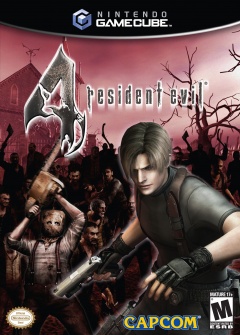heavenly sword
Heavenly Sword
 The Playstation 3 was a tough sell for Sony back in 2006. Nevermind
the console's infamous $599.99 US price tag; it simply didn't have any
must-have games in its launch window. Much like the PS2, the system's
first year was mostly without a killer app. Even worse, adoption of the
Blu-Ray format wasn't nearly as fevered as the PS2's
prominently-featured DVD drive. It was once said that the best-selling
game in the PS2's first year was The Matrix on DVD: people ignored the
lack of games, they just wanted a DVD player, and PS2 provided a cheap
solution, which the $600 PS3 was anything but.
The Playstation 3 was a tough sell for Sony back in 2006. Nevermind
the console's infamous $599.99 US price tag; it simply didn't have any
must-have games in its launch window. Much like the PS2, the system's
first year was mostly without a killer app. Even worse, adoption of the
Blu-Ray format wasn't nearly as fevered as the PS2's
prominently-featured DVD drive. It was once said that the best-selling
game in the PS2's first year was The Matrix on DVD: people ignored the
lack of games, they just wanted a DVD player, and PS2 provided a cheap
solution, which the $600 PS3 was anything but.
Perhaps Sony's first true hope for a must-have game, Heavenly Sword was released in November 2007, a full year after the system launched. The game was marketed heavily, taking top slots in Sony's E3 presentations and making appearances on television months before it was to launch. When Heavenly Sword finally descended onto store shelves, reviews averaged out to a positive mark, though the range of praise spanned from "Perfection" to "disappointment."
As a bit of a 3D action game buff, I've always had my eye on Heavenly Sword, but I'm only just now playing it for the first time. I've got specific tastes in the genre: even God of War managed to disappoint me on some levels. Let's see if Heavenly Sword cuts it.
The QTE plague: What hath God of War wrought?
 Quick Time Events. So many games have used them to some extent in the
last five years that just about every gamer has an opinion on them.
Mine is that they are the worst gameplay gimmick to take the industry by
storm in a long time, and I wouldn't mind seeing them all packed into a
burlap sack filled with leeches and thrown into the depths of a
volcano. They're tacky, they're unintuitive, and their attempts to
engage players in cinematic animations backfire and break the sense of
immersion one has with a game. And unfortunately for me, they're just
about everywhere these days.
Quick Time Events. So many games have used them to some extent in the
last five years that just about every gamer has an opinion on them.
Mine is that they are the worst gameplay gimmick to take the industry by
storm in a long time, and I wouldn't mind seeing them all packed into a
burlap sack filled with leeches and thrown into the depths of a
volcano. They're tacky, they're unintuitive, and their attempts to
engage players in cinematic animations backfire and break the sense of
immersion one has with a game. And unfortunately for me, they're just
about everywhere these days.
Two behemoths let loose in early 2005 can be thanked -- or blamed -- for the salvo of games that have featured QTEs in the last five years. The first, with a January 11 release date, was Resident Evil 4. The game was extremely well-received: it won many Game of the Year awards, offered a fresh take on the aging Resident Evil formula, and gave Gamecube owners a third-party exclusive worth bragging about. The other member of the gruesome twosome that brought us into the era of QTEs is known as God of War. Released just two months after Resident Evil 4, the game received just as many accolades and turned heads back to the PS2 as quickly as they'd been lost to the Gamecube's horror hit. Is it any wonder that the industry went in the direction it did when two such monumental successes as these both prominently featured a relatively unused gameplay gimmick?
Today we'll take a look at how the smart use of QTEs helped put these two games on the map, and watch a few examples of QTEs gone wrong. And trust me, there was a huge pool of resources for the latter.
Heavenly Sword
Heavenly Sword is the latest PS3 exclusive title from developers Ninja Theory. They are a relatively new and smaller development house based in Cambridge, England. Originally founded under the name Just Add Monsters, their only previous project was an unrelated original Xbox exclusive entitled Kung Fu Chaos. Released in 2007, Heavenly Sword was hyped as displaying an example of what the PS3 was truly capable of.
The game follows the story of Nariko as she comes face to face with the prophecy of her people, a prophecy that may lead to victory over an opposing army but will almost surely end in her death. According to the story, Nariko’s clan has possession of The Heavenly Sword, a gift left behind by a warrior deity who once wielded the sword to protect them. It is now their sworn duty to protect the sword and to make sure it doesn’t fall into the wrong hands. Legend has it that any mortal who wields the sword will be granted amazing powers in combat, enabling them to slay armies, but will succumb to it’s power by eventually being cursed and dying a horrible death. The prophecy further says a male warrior will be born on a special day with the power to wield the sword. But on that prophetic day, the very feminine Nariko is born instead.

